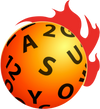How Eye Movements Improve Coordination and Reaction Time in Parkinson’s

Parkinson’s disease doesn’t just slow movement—it disrupts the timing and coordination between what you see, how you decide, and how you move. This leads to delayed reactions, clumsy coordination, and increased risk of tripping or bumping into things. What many people don’t realize is that training eye movements can directly improve how quickly and accurately the brain responds to what it sees—boosting both coordination and reaction time.
Everyday tasks—like catching a ball, stepping onto a curb, or responding to someone calling your name—require fast and accurate coordination between the eyes, brain, and body. These “sense-decide-act” loops depend on the brain’s ability to interpret visual cues, plan a response, and send movement instructions in milliseconds. In Parkinson’s, this process slows down due to impaired dopamine signaling and disruption in the basal ganglia, which play key roles in movement planning and speed.
Eye movement exercises—especially those that involve rapid gaze shifts (saccades), visual tracking (smooth pursuit), and fixations—can retrain the brain to process input faster and respond more precisely. Research shows that practicing these skills helps rebuild timing, improve motor planning, and reduce reaction delays. This is particularly important in Parkinson’s, where even small improvements in reaction time can reduce fall risk and restore confidence in everyday movements.
That’s exactly where the BrainSpeed Ball® fits in. By tracking the ball’s unpredictable movement and calling out colors, letters, or numbers, users challenge their eyes and brain to work together at speed. This builds visual-motor coordination, sharpens response timing, and strengthens focus—all while having fun. It’s a low-barrier, highly effective way to activate the brain’s sensory-motor systems in just a few minutes a day.
Improving coordination and reaction time isn’t just about moving faster—it’s about restoring the brain’s ability to interpret and respond to the world with confidence. For people with Parkinson’s, eye movement training offers a meaningful and research-backed way to improve how they move, react, and engage with life.
Learn about our Parkinson's Specific Training Program Here:
Sources:
Amador, S. C., & Hood, A. J. (2003). Task-specific saccadic eye movement abnormalities in Parkinson’s disease. Brain, 126(4), 1022–1035. https://doi.org/10.1093/brain/awg104
Fukushima, K., Fukushima, J., Warabi, T., & Barnes, G. R. (2015). Cognitive processes involved in smooth pursuit eye movements: Behavioral evidence, neural substrates and clinical correlation. Frontiers in Systems Neuroscience, 9, 156. https://doi.org/10.3389/fnsys.2015.00156

